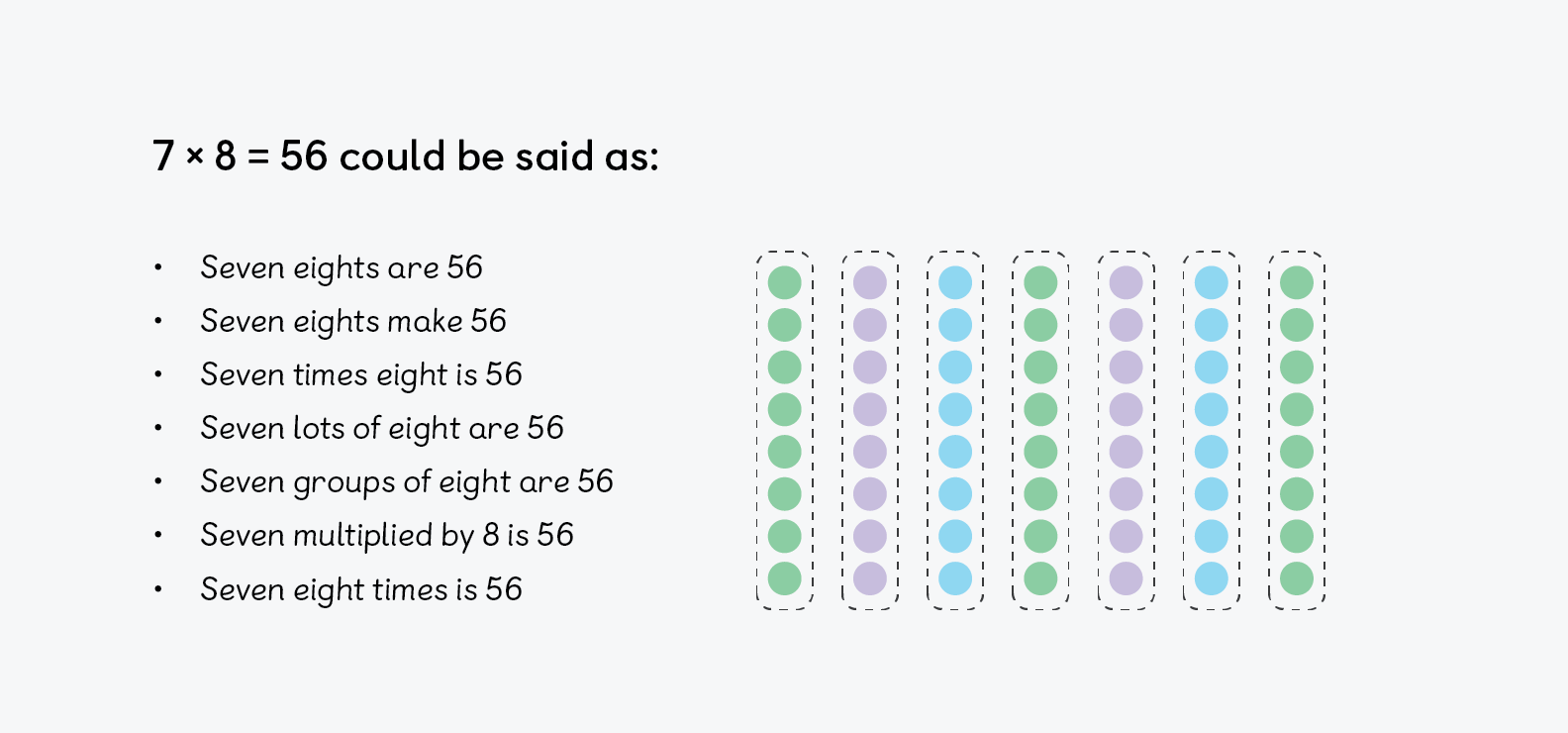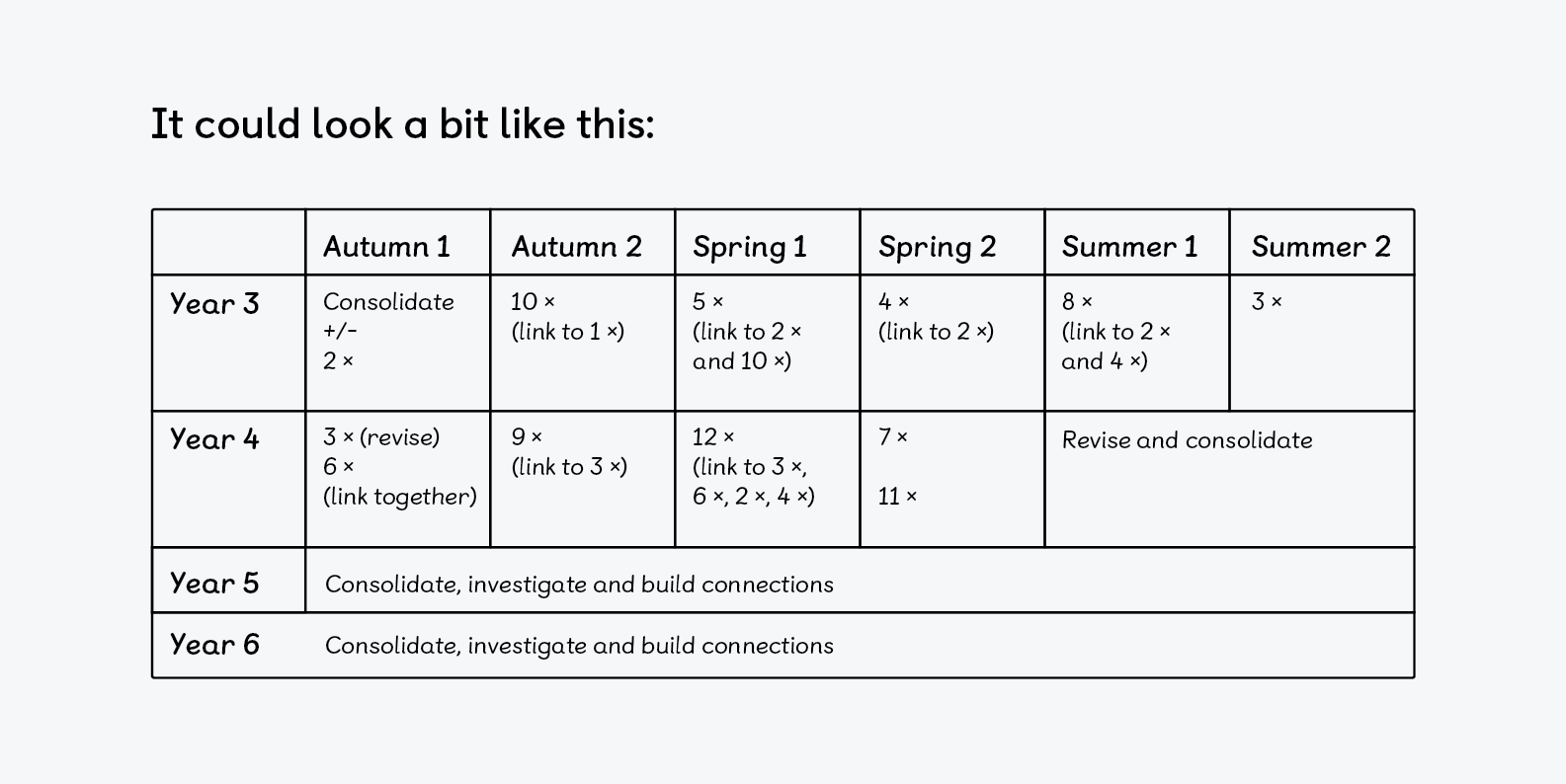Four tips for teaching multiplication facts recall
Building auditory sound bites makes the link between the question and the answer so strong that in time pupils will answer the question without even thinking about it.
In my last blog post, I wrote about the importance of ensuring pupils have conceptual understanding of multiplication facts. Do they understand what 6 × 2 means, and how it can be represented? If they don’t, they are as likely to remember 6 × 2 = 12 as I am to know how to recite a poem in Turkish!
But that’s only the first part of the story. We also need to ensure our pupils can effortlessly recall facts when they need them so their limited working memory isn’t overloaded.
Fortunately, as long as we understand the way our brains work, we can use this to help pupils build the effortless recall they need.
Did you know our brains store multiplicative facts in our auditory memory? That’s why it’s so important to say the phrase and hear the sound pattern and rhythm — seven threes are twenty-one, for example. It’s a bit like song lyrics — how often do you surprise yourself when you hear a song from your teenage years and are able to sing along, knowing each word perfectly, even though it’s been years since you last heard it? We can use this to help our pupils remember multiplication facts.
Build auditory sound bites
Always say the question and answer together. If you ask your class ‘Seven nines?’ Insist that they always reply ‘Seven nines are sixty three’. Building auditory sound bites makes the link between the question and the answer so strong that in time pupils will answer the question without even thinking about it. In fact, recalling multiplication facts is the one and only time in maths when you don’t want your pupils to be thinking!
Be consistent
Consistency is key. Learning multiplication facts is an example of when the usual rules of maths learning don’t apply. Ensuring pupils encounter variation in the ways questions are asked is important; we don’t want them to only recognise a concept when they encounter it in the one way they are used to. But if we are supporting our pupils to build those auditory sound bites, it’s crucial that the fact is always heard and said in the same way, every single time.

Make sure to choose one to use consistently in your classroom and across the whole school. It’s not good when you say a fact one way and next year’s teacher says it differently. It’s important to agree on consistent phrases as a whole school to build auditory sound bites.
And keep in mind, the shorter a thing is, the easier it is to remember. That’s why I always use the shortest option for multiplication facts: ‘Seven eights are 56.’ It reduces the amount pupils need to recall, making it easier to build those auditory sound bites. Consider this when deciding which phrase to repeat across your school.
Transform Your Maths Assessment
Insights — our online assessment tool — gives you instant, powerful data to identify gaps and improve results.

Use visual cues
Try visual cues to support pupils’ memories. This is particularly important if pupils have additional learning needs that make memorising table facts harder. In other subjects, if we asked pupils to remember large amounts of information, we’d give them visual images to help. We can do that in maths too. I use the multiplication cards produced by FunKey Maths as they are so well thought out with their use of pictures, images and colours. These are by far the best I’ve found, but there are many other versions of multiplication fact cards available to buy or download, or you could make your own.
One at a time
Concentrate on one multiplication table at a time. In A Whole School Approach to Teaching and Learning Times Tables, Professor Jenny Field suggests the formation of a new neural pathway takes about eight to 10 weeks.
If we jump around between times tables, we prevent the formation of this new neural pathway. So pick one multiplication table and concentrate on practising it for at least half a term. You could have a whole school overview so that leaders and teachers know exactly which table each class is focusing on and when.

Write an overview for your own school that suits your pupils. What’s important is that pupils don’t slip through the cracks because adults aren’t clear what they should be teaching and when they should be teaching it.
